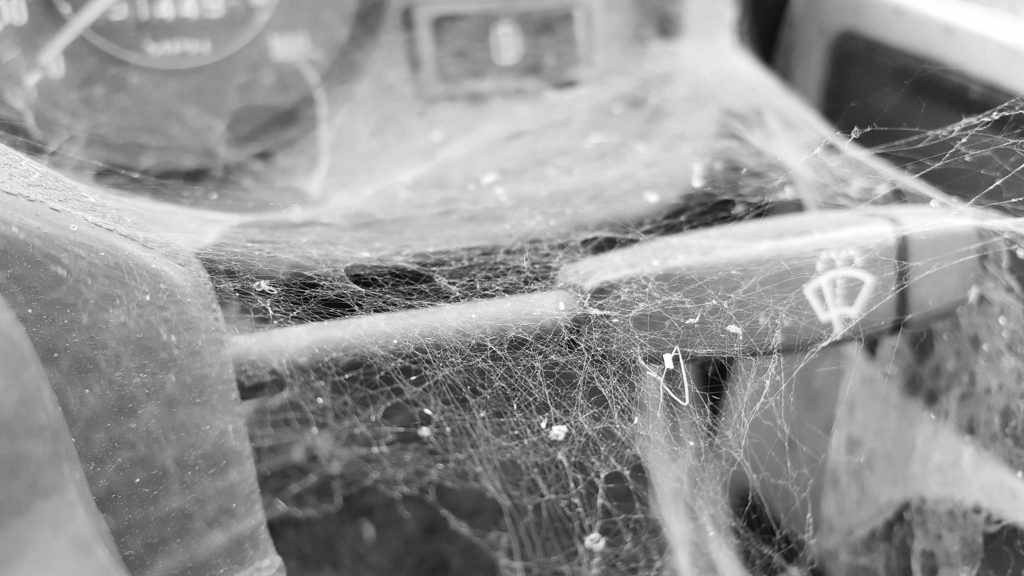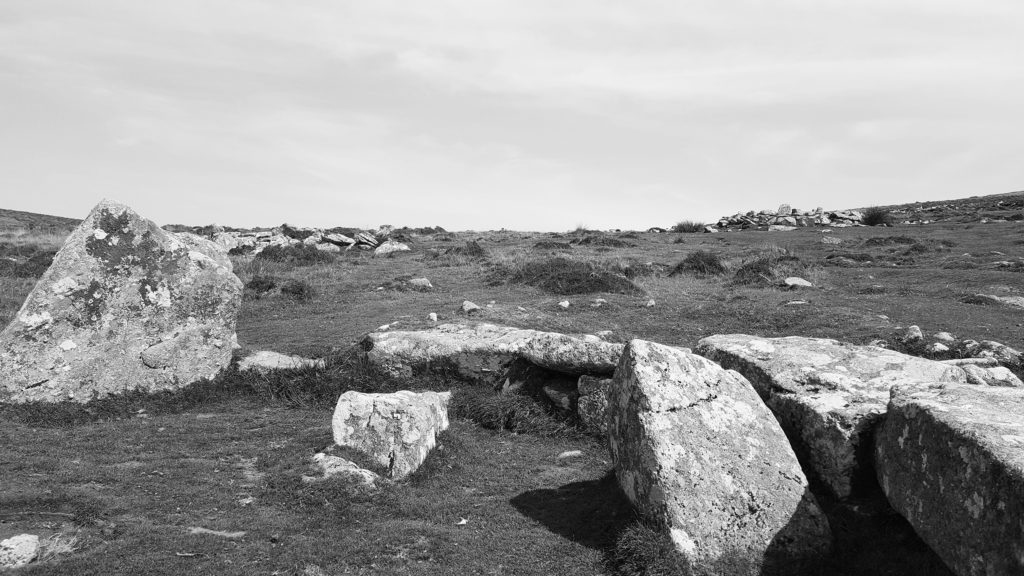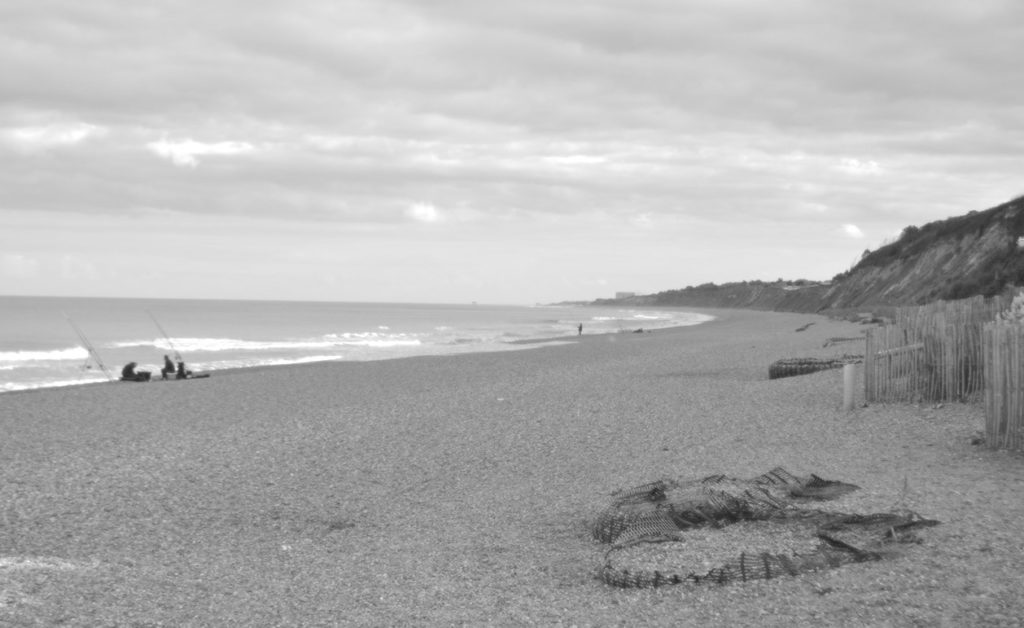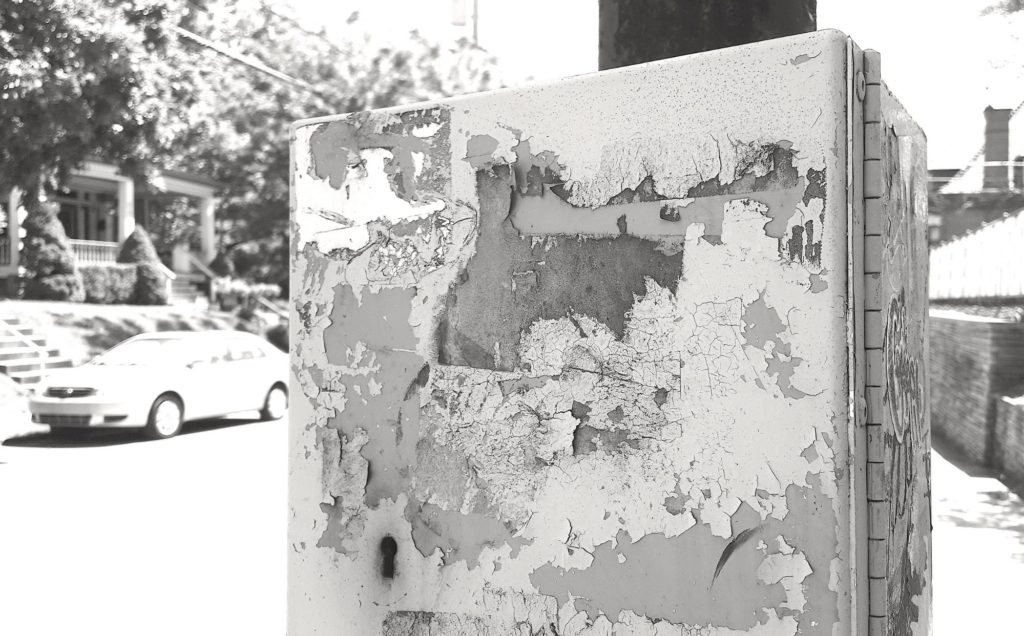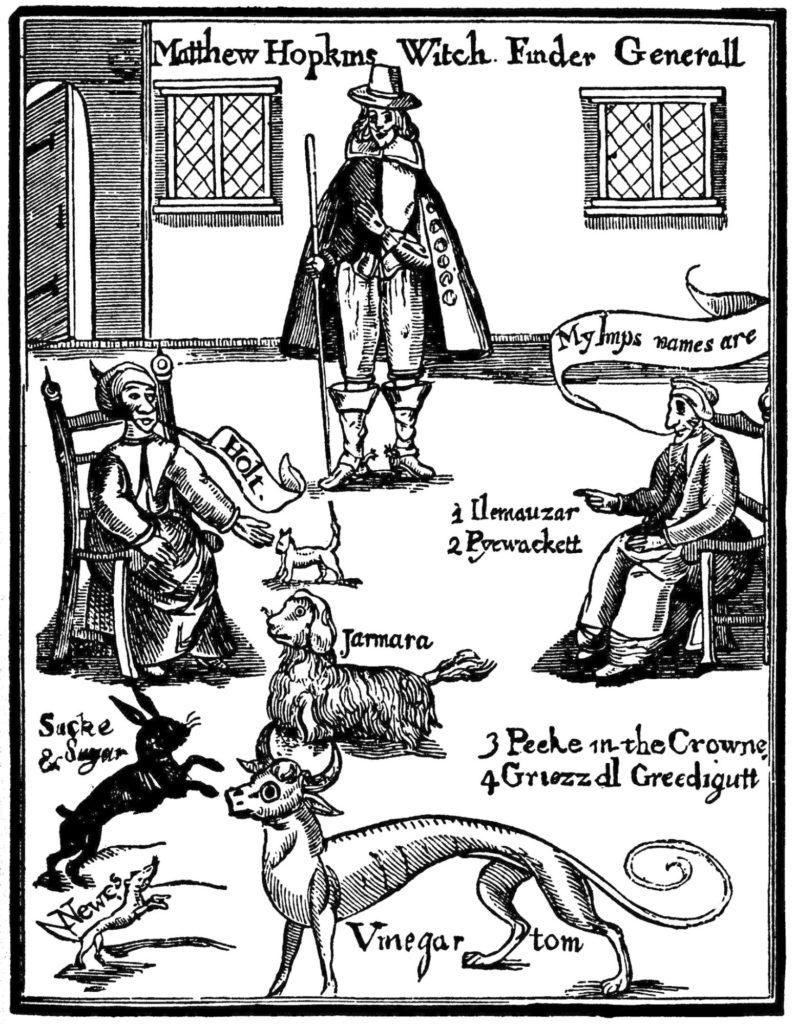Dan Lockton
This is a draft of an article for the Spooky Technology book that Daragh Byrne and I are putting together with Meijie Hu, Miranda Luong, Matthew Cruz, Anuprita Ranade, Gordon Robertson, Karen Escarcha, Yiwei Huang, Katherine Giesa, Lisa Yeung, Christi Danner, Catherine Yochum, and Elizabeth Wang (summer–autumn 2020).
“On every new thing there lies already the shadow of annihilation”
W.G. Sebald, The Rings of Saturn [1]
One common thread across many of the projects included in this book—and many which are not—is the idea of other times (or places, or people) intruding into, or being present in our time. This is, on one quite trite level, what much technology has brought us, from camera to telephone to the endless Zoom call: ways to get access to memories and minds, our own and others’; ways to talk to or see people and places we couldn’t otherwise, from across the world or across time, an endless archive. As Mark Fisher noted, “in conditions of digital recall, loss is itself lost” [2].
“Far away is close at hand in images of elsewhere”
Graffiti on a wall near Paddington station, London, in the 1970s [3]
It might not be how we routinely think about technologies which have become prosaic, mundane, no longer magical, but a slight shift in frame can cause us to think somewhat differently about the enmeshed systems we exist and live within. The action-at-a-distance notions in time and space, whether it’s an IoT heating system being switched on remotely, or even the idea of code itself—written instructions to a physical object—are actually quite profound, spooky even. I seem to remember that the motoring writer Karl Ludvigsen once used the analogy of the car being in a sense a realisation of the mythical ‘seven league boots’ beloved of European folklore, a way of humans finally approaching the long-sought affordances they had only imagined as possessed by supernatural beings. While it seems a bit overdone, perhaps, to talk about today’s technologies in a similar vein, there is something in it. We have achieved the ability to replay our memories, others’ memories, to talk to people across time and across the world, to carry vast sums of knowledge in our pockets, to enter and live in worlds where we talk to and care about entities which only exist in relationships between charged particles or photons or magnetic fields far away from us, in the sky or under the sea, deep in Icelandic data centres or in a thing we have come to imagine as a cloud.
“The digital cloud actively erases its own historicity; like its namesake it constructs itself through pure fluctuation”
Extract from Tung-Hui Hu, A Prehistory of the Cloud [4], quoted in J. R. Carpenter, The Gathering Cloud [5]
Stone Tapes: Environment as Storage Medium
I am very aware that my reference points in this essay are mostly very European, and mostly inspired by books about ghosts I read when I was young. But they have stuck with me, haunted me. As I write this—with pen and paper—I am sitting in one of the long-ruined huts of the Bronze Age village of Grimspound, on Dartmoor, Devon, UK. I need the high air to think in. I am in the ruins of what was a civilisation—not a grand classical one, but one which left us with some traces at least of how people lived 3000 years ago, high up in what seems to us now to be a remote area. A child 100 yards away asks someone I can’t see “What is this place? What was it for?” and a set of three birds, which I later identify as either wheatears or red-backed shrikes, chase each other: this is their place now.
I don’t know exactly what has happened on the spot I am sitting, over thousands of years (I’m actually sitting on one of the ruined walls, so people who’ve sat here before me are I would think mostly much more recent than the people who built it). As Mark Fisher said, “we find the eerie more readily in landscapes partially emptied of the human” [6]. Perhaps though, the stone I sit on, or its arrangement in relation to others, could in some way hold a memory? That’s the idea behind what has become known as Stone Tape theory, and I feel it’s worth talking about because—though it’s not, of course, science—it has a number of parallels and crossovers with how we might be thinking about technology right now. Stone Tape Theory is named after a 1972 television movie [7] written by Nigel Kneale, best known for the Quatermass series but also for some often dark psychological short stories (Tomato Cain) and the ‘speculative media’ sci-fi, The Year of the Sex Olympics.
In the film, a tech company is developing new data storage media for computers. But they find that the old buildings they move into for their lab are somehow storing past events, highly emotionally charged ones, in the walls of the building itself. When someone sensitive—a programmer—is in a similar emotional state, she ‘tunes in’ to the memories stored in the building and re-experiences them, with terrifying consequences. Of course the company tries to exploit the discovery…
The idea itself is related to the ideas of Tom Lethbridge [8], an archaeologist who—living about 40 miles east of where I’m sitting—proposed that perhaps human emotions could be recorded on magnetic fields in the environment (often in damp places) and that some people could re-experience them—and that that might be what ghosts are (decidedly non-interactive). Whether it has any validity or not scientifically, could be a really interesting inspiration for a kind of augmented reality or smart environment—a room that can ‘re-play’ things that have happened in it.
I didn’t bring a laptop with me up on the moor, but I do have, in my bag, a few feet away, three USB sticks with every digital photo I’ve taken since 2002 on them (I have got into the habit of carrying them around buried deep in a pocket of my bag). Without their plastic casings, what are the chips inside? Not much more than a special form of stone, an enchanted lump of sand that needs special rituals to decode, two decades of memories in some odd pebbles. Dartmoor is known for its letterboxes, a more traditional form of geocaching [9] involving following clues to find (often hand-carved) rubber stamps, ink pads, and notebooks in Tupperware containers hidden under stones or in other places on the moor; the determination to leave a trace for others, and collect or contribute to others’ memories, is strong.
“IF YOU CAN’T LEAVE YOUR MARK GIVE UP”
Jenny Holzer, Truisms 1978-83 [10]
Place and trace: some thoughts on Sebaldian Interaction Design
The idea of existing within the ruins of previous plans, of the environment encoding a form of memory, is—though in a different way—central to the work of W.G. Sebald, who I feel deserves much greater attention in the interaction design community. Sebald (1944–2001) was a German writer, based at the University of East Anglia in England from 1970 until his death. His best-known books—in a career in which he only achieved wider prominence towards the end of his life—were somewhere between fiction, travel writing, and historical investigation, but classifications such as this do a disservice to the distinctive and multi-layered form of his writing. Sebald is very much worth reading: not always easy, but a master of the psychogeographic style he developed. From a design perspective, Sebald is known for illustrating his writing with often uncaptioned images, some of which directly relate to the text, but others only doing so in a metaphorical sense, or requiring the reader actually to think about and interpret the parallels between what’s in the image and what the surrounding text is about (The Rings of Saturn and Austerlitz both do this extensively). And occasionally it really is ‘surrounding’ text: images are positioned in the middle of sentences, as if they are part of the idea,
much as I am doing here. Sometimes using Sebald’s own photos, but often found (or probably, meticulously searched-for) images from old postcards or other books, extracts from old maps, catalogues or timetables or diaries, grainy and often indistinct as an artefact of the printing process—but also, I am sure, intentionally—the approach to illustration (which is unusual enough in literary fiction anyway) invites comparison with the emergence of the pictorial format at interaction design conferences such as DIS, C&C, and RTD, where the story of a design project, or a reflection on a concept, is expressed through images and text in a much more tightly woven style than most academic papers. I have not yet seen a Sebaldian pictorial at a conference, but perhaps I can turn this essay into such an article.
But here, mainly, I want to draw attention to the ways that his writing touches on, and helps illuminate, a number of the themes we have seen emerging in our work on Spooky Technology, and how they relate to our interactions with the world. (I should say first: I doubt that Sebald would have used the word ‘spooky’; ‘uncanny’, or rather unheimlich, would probably have been more his style, but not in the Uncanny Valley sense which we have come to associate with the term when we think about technology.) Some critics (quotes from the New Directions edition of The Rings of Saturn) have noted Sebald’s “almost supernatural sensitivity” (Nicole Krauss), even suggesting that his books “had a posthumous quality to them. He wrote… like a ghost” (Geoff Dyer). For John Wylie, “Sebald’s writing is characterized by irruptions of the surreal and the phantasmagorical, in flights of fancy, meandering digressions, switches of mood and topic and uncanny episodes.” [11]. What this means in practice is partly that his writings are some of the most direct expressions I’ve ever come across of the idea of ‘what happened here before’—the sense that a place is haunted by the layers of others’ memories and the experiences which have taken place in the past, that a physical location encodes or embodies the histories of others’ lives and interactions with it. In Sebald’s world, this is beyond Lethbridge or Kneale’s Stone Tape with its literal ‘recording and playback’ which has very clear interaction design parallels—although there is a bit of that, for example the Liverpool Street waiting room in Austerlitz and the village of W in Vertigo—and also somewhat beyond the idea of ‘place as palimpsest’. It is something more akin to physical journeys through spaces as a way into memory, as a form of distributed unreliable timeslip where the travel (in his case, usually walking, occasionally train or bus) is a way of cleaving these layers (unevenly), revealing fragments of pasts and stories, but, crucially (and perhaps counterintuitively also at first reading) the ways in which the histories of one place (and even their geographies) can be transposed into another (this is especially resonant in Austerlitz and through the traumas of emigration, displacement, and seeking refuge in The Emigrants). John Wylie suggests that Sebald is effectively visiting the past: “within an irreducible and originary wandering, these places are the past itself, the ceaseless becoming-past of the present in all its inescapable revenance” [12]. In ‘Campo Santo’ [13] Sebald notes how “photography… in essence… is nothing but a way of making ghostly apparitions materialise by means of a very dubious magical art,” discussing specifically the Corsican (and of course much more widespread) practice of wakes being “held beneath the uncompromising gaze” of photographs of relations “who although or even because they were no longer alive were regarded as the true heads of the family”—“a shadow realm extending into the light of day”.
Sebald’s writing very frequently uses one place or the sight of something in a landscape or town or village to trigger memories of somewhere else, most notably around echoes of the Holocaust being “constant company” [14]—he sees patterns in the world, patterns across place and time, and allows an almost intentional apophenia [15] to drive his thinking. Events in one place and time can haunt another place and time; in his case, they are mainly around the pain and darkness of the ways humanity has treated itself. So these are not always direct mappings; they are, perhaps, rather more like a connection to, or shadows of, a larger system or network of people’s collective memories and forgettings—an assemblage of past interactions and hopes and fears, in perhaps (stretching it, I know), an analogous way to how our interactions with technologies such as Alexa or Siri can connect us to a larger invisible world built partly from all the interactions other people, nameless, without identity (to us at least), have had with the system over years—a shared haunting encoded in the world. The models we experience are perhaps akin to the graveyard we wander without reading the names eroded by the years.
Another aspect of this which may be familiar from our experiences with much current technology is the kind of context collapse [16] that happens when we cannot avoid bumping into memories, our own or others’, through unavoidable juxtapositions. The well-known examples recounted by Eric Meyer and Sara Wachter-Boettcher [17] of Facebook Memories highlighting photos of bad experiences, dead family members, or worse, highlighting and resurfacing, over and over again, incredibly painful posts from previous years about a child’s death, presented without context as if all anniversaries are something to celebrate and share, sandwiched between targeted advertising and acquaintances’ holiday photos, are ever-present in a particularly stark way, although perhaps Sebald is really showing us that they always were (just not so obviously). Haunting, by our own or others’ memories, has always been with us; it’s just that networked haunting is perhaps at another scale entirely: think of huge data sets or trained models in machine learning—GPT-3 as a repository of human ways of expression, Alexa as assemblage of all past interactions with the platform, Google as a database of human intentions in all their conflictedness and messiness and truth and pain. What can we get from that, in our own ways? Mark Fisher again, discussing the music of John Foxx in the context of hauntology, talks about how “to leaf through other people’s family photos, to see moments that were of intense emotional significance to them but which mean nothing to you, is, necessarily, to reflect on the times of high drama in your own life, and to achieve a kind of distance that is at once dispassionate and powerfully arresting” [18]. I am reminded here of films such as Mark Leckey’s Dream English Kid 1964–1999 AD [19] in which found footage from others of scenes and times from Leckey’s own life, or the life of a fictionalised version of him, are woven into a story from his perspective, a recovered memory which otherwise could not have been reconstructed.
Dunne and Maybe: timeslips and speculative design
Patterns across place and time are, of course, a major part of popular fiction, especially in stories explicitly about time-travel whether to the past or future, intentional or accidental, or travel to far-away or fantastical places. From Francis Godwin’s The Man in the Moone (1638 [20]) in which a Spanish man builds a flying machine by harnessing some very powerful swans, and is given magical stones including an anti-gravity material by inhabitants of the Moon, to John Titor (2000 [21]) who appeared on various message boards and forums claiming to be from 2036 and seeking to recover a 1970s IBM 5100 computer to tackle legacy software exhibiting the UNIX Year 2038 problem, technologies are often central to these kinds of stories. Would H.G. Wells’s The Time Machine (1895) have been so influential without the technology itself being described? Nevertheless, the idea of seamless travel in time or space, or at least travel without visible technology, is also interesting, and has been, at various points, considered as a way of thinking about ‘ghosts’—could it be that the observer somehow briefly slips into a different time, past or future? Could ghosts that people see in our time actually be visitors from the past or future slipping into our time—probably just as surprised to see us (and our surroundings) as we are to see them? This has also been suggested as an explanation for sightings of UFOs and aliens.
I’m especially interested in stories where people claim to have slipped into a future time, because of all the parallels with speculative design, design fiction, and futuring. For example, a set of articles from The Unexplained, a 1970s partwork [22] includes the story of a family driving on a German autobahn who saw what looked like a vehicle from the future, a torpedo-shaped silver car with no wheels, travelling very fast on the other carriageway, with terrified-looking occupants staring out of port-hole windows at them. Who were the ghosts there—was it the family slipping into the future, or the future vehicle slipping into the present? There’s another story of someone who claimed to have experienced a glimpse of a future street where traffic made no sound and the texture of the road surface and buildings was a smooth synthetic substance, and cars could not collide. Perhaps this is closer to today’s driverless car visions.
(Of course there is also the question of whether this happens in dreams. The aeronautical engineer J.W. Dunne’s 1920s book An Experiment With Time [23] argued that perhaps in our dreams, we are able to ‘see’ both directions along the time dimension, in the same way as in real life we can turn our heads to look in both directions in other dimensions. So our dreams might be partly made up from memories of the future, in Dunne’s theory.)
As with anything relating to futuring, the idea of timeslips suggests that while they could be a warning—in a ‘Ghost of Christmas Future’ sense, or a Ballardian ‘myths of the near future’ way—we could perhaps aim to bring about such visions if they are inspiring, or take a different path if they are not. Perhaps the growth of experiential futures, by Stuart Candy [24] and colleagues, could be seen as a kind of strategic use of ‘timeslips’—designing experiences which really convince people they have slipped into a future, as a way of probing and exploring their reactions and how new practices emerge. Perhaps designed timeslips could be part of a new vocabulary for visions [25].
How much, though, are we all currently haunted by the past, or by an image of the future looming over us? Or indeed by past visions of the future? Mark Fisher—emphasising the technological dimensions, particularly aspects such as the presence of crackle in analogue audio recordings giving “a certain sense of loss”—discusses hauntology in this context (very much aligned with the concept of imaginaries [26]) as “the agency of the virtual, with the spectre understood not as anything supernatural, but as that which acts without (physically) existing”, identifying two directions: “that which is… no longer, but which remains effective” and “that which… has not yet happened, but which is already effective in the virtual” in the ways it shapes people’s current actions and thinking. Deeper than this though, is the haunting by ideas of lost futures, nostalgia for imagined futures which never actually came to pass, “the not yet of the futures that popular modernism trained us to expect, but which never materialised” [27].
The demon-haunted smart home
Returning to the idea of hauntings of place, another historical folklore topic that seems to have fascinating parallels with contemporary technology is the idea of the familiar in the sense of a witch’s companion animal, often a cat, or some kind of spirit or imp. According to some accounts, the witch could send the familiar (which could often change its shape or form as needed, e.g. turning into a bird or a bat) out to gather and bring back news on things happening, maybe in private. So the witch would end up with a continuous information source about other people’s lives, secrets, happenings around the village or potentially the world, all in the comfort of her own home. In our contemporary lives—even more so right now when so many of us are really receiving so much of our information remotely—you can see where I’m going with this. In particular I’m inspired by the descriptions of the familiars of the witch Elizabeth Clarke in The Discovery of Witches [28], a 1647 book by the ‘Witchfinder General’ Matthew Hopkins, who bragged about the witches he had found (and had killed; Elizabeth Clarke was hanged). The polecat Newes is literally a creature that Elizabeth Clarke could delegate to bring her news from elsewhere while she’s sitting in her chair, which in some ways is not terribly different to the idea of a news feed, or the idea of something like a daemon in software (see [page X], this volume). The ‘private’ news she gets about people’s lives is almost a form of spyware, or a behavioural profile maybe. She talks to the familiars to issue them commands, ask them questions. They are essentially voice assistants.
Elizabeth Clarke had, if not exactly a smart home, an information environment 450 years before the term was even used. (There is a curious 1970s parallel from an early vision of a smart home, by the cyberneticist Stafford Beer—an illustration from his book Designing Freedom [29] shows what appears to be somewhere between Elizabeth Clarke’s familiars and a modern voice assistant like Alexa or Siri. A person relaxing in their chair can ask the room around them to bring them news, to find out answers, to help them make decisions, and already there is a notion of privacy concerns built in. I suppose what I’m getting at here is that the idea of familiars might have some interesting parallels in current technology, or might even be an interesting way to think about voice assistants, AI, chatbots, and so on. The example of the Haunted House of Coates (see [page X], this volume) goes some way towards this, recalling movies such as Demon Seed (1977, based on a Dean Koontz novel)—perhaps more so than HAL 9000—and indeed the idea of the household deity. What does Alexa know about you due to a kind of omniscience? Do you need to ‘appease’ Alexa each day? What would happen if you did, or didn’t? What will the ghosts of our future homes, our future places, be like?
- W. G. Sebald, 2016. The Rings of Saturn (trans. Michael Hulse). New Directions Press. Originally published in English 1998.
- Mark Fisher, 2014. ‘The Slow Cancellation of the Future’ in Ghosts Of My Life: Writings on Depression, Hauntology and Lost Futures. Zero Books.
- Philip Wilkinson, 2011. ‘Paddington, London’ on English Buildings blog https://englishbuildings.blogspot.com/2011/01/paddington-london.html
- Tung-Hui Hu, 2015. A Prehistory of the Cloud. MIT Press
- J. R. Carpenter, 2017. The Gathering Cloud. Uniform Books
- Mark Fisher, 2016. The Weird and The Eerie. Repeater Books.
- The Stone Tape. 1972. Written by Nigel Kneale; directed by Peter Sasdy. BBC. https://www.youtube.com/watch?v=vtvJWKaDI9s
- Colin Wilson, 1981. ‘A seeker after truth’. The Unexplained 3 (29), Orbis Publishing.
- ‘History of Letterboxing’, undated. Letter Boxing on Dartmoor website https://letterboxingondartmoor.co.uk/?page_id=28
- Jenny Holzer, 1978-1983. Truisms 1978-83. Listed at https://www.cs.utexas.edu/~field/holzer/truisms.txt
- John Wylie, 2007. ‘The Spectral Geographies of W.G. Sebald.’ Cultural Geographies 14(2):171-88.
- ibid.
- W. G. Sebald, 2005. ‘Campo Santo’ in Campo Santo (trans. Anthea Bell). Random House.
- Maya Jaggi, 2001. ‘The last word’. Guardian, 21 December 2001 https://www.theguardian.com/education/2001/dec/21/artsandhumanities.highereducation
- Dan Lockton, Some Cracks In The Paving, and Water Trapped In The Window Of A British Rail Class 450 Train Carriage, 2018. ‘Apophenia As Method—Or, Everything Is Either A Metaphor Or An Analogue Computer’. Disruptive Improvisation: Making Use of Non-Deterministic Art Practices, workshop. CHI 2018: ACM Conference on Human Factors in Computing Systems, Montreal. https://disruptiveimprovisation.files.wordpress.com/2018/04/lockton_cr_040118.pdf
- Alice E. Marwick and danah boyd, 2010. ‘I tweet honestly, I tweet passionately: Twitter users, context collapse, and the imagined audience’. New Media & Society 13(1):114–133.
- Eric A. Meyer and Sara Wachter-Boettcher, 2016. Design for Real Life. A Book Apart.
- Mark Fisher, 2014. ‘Old Sunlight From Other Times and Other Lives’: John Foxx’s Tiny Colour Movies’ in Ghosts Of My Life: Writings on Depression, Hauntology and Lost Futures. Zero Books.
- Dream English Kid 1964–1999 AD. 2015. Directed by Mark Leckey. https://vimeo.com/144790614
- Francis Godwin, 1638. The Man in the Moone. Extracts available at https://www.bl.uk/collection-items/the-man-in-the-moone
- Pedro J. S. Vieira de Oliveira and Luiza Prado de O. Martins, 2014. ‘‘Every possible thing that can happen or will happen has already happened somewhere’: John Titor, hoaxes and speculative design.’ Ubiquity: The Journal of Pervasive Media 3(1):35-50.
- Joan Forman, 1981. ‘When time slips’. The Unexplained 3 (33), Orbis Publishing.
- J.W. Dunne, 1927. An Experiment With Time, A & C Black.
- Stuart Candy, 2010. The Futures of Everyday Life: Politics and the Design of Experiential Scenarios. PhD thesis, University of Hawai’i.
- Dan Lockton and Stuart Candy, 2018. ‘A Vocabulary for Visions in Designing for Transitions’. DRS 2018: Design Research Society, Limerick. https://imaginari.es/publications/Lockton_Candy_DRS2018.pdf
- Dan Lockton, Michelle Chou, Aadya Krishnaprasad, Deepika Dixit, Stefania La Vattiata, Jisoo Shon, Matt Geiger, Tammar Zea-Wolfson, 2019. ‘Metaphors and imaginaries in design research for change’. AHRC Design Research for Change Symposium, London. https://www.researchgate.net/profile/Dan_Lockton/publication/337439129_Metaphors_and_imaginaries_in_design_research_for_change/links/5dd75c0ba6fdcc474feb7df3/Metaphors-and-imaginaries-in-design-research-for-change.pdf
- Mark Fisher, 2014. ‘The Slow Cancellation of the Future’, ibid.
- Matthew Hopkins, 1647. The Discovery of Witches. Extracts available at https://www.bl.uk/collection-items/the-discovery-of-witches
- Stafford Beer, 1974. Designing Freedom. Wiley.

